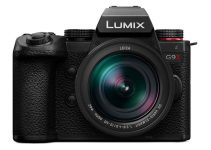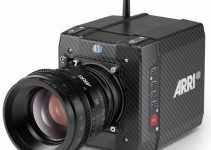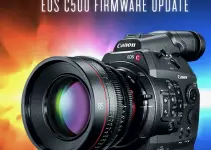2020 was a killer year for cameras. There were a lot, and one of the most exciting was the RED KOMODO 6K – a (relatively) affordable compact solution from the renowned company. Being at a much more manageable price point put it in direct competition with other brands, such as Canon with their also new and compact EOS C70. And, with both being RF mount cameras, it’s an interesting comparison between the two.
Filmmaker Griffin Conway, who you might remember compared the C200 to the KOMODO, kept things going and is now putting the KOMODO and C70 into a head-to-head comparison. He is taking a look more specifically at dynamic range, slow motion, and autofocus.
A major difference to consider between the C70 and C200 is that the C70 does not have raw, which may put it at a disadvantage to the KOMODO, but we shall see.
Test 1: Full Sensor 24 fps
Both are Super 35mm cameras, though the formats are very different. The C70 offers a 4K All-I codec and the KOMODO records in 6K raw with medium quality for these tests. Matching the exposure between the two and shooting in tough backlit scenes is always a good test. Both cameras actually handled everything very well. The edits were very simple, with either a basic Rec.709conversion (RED) or a standard LUT (Canon).
Dynamic range actually looks very comparable. In these shots they look practically identical. An argument could be made for the RED’s raw format handling even more difficult scenes, but it doesn’t seem to be a huge advantage to be honest.
For color, the Canon shows a little more magenta in the skin tones while RED looks a little green in the shadows. Not a big deal, but something to consider.
Test 2: 4K 60 fps
Now we are getting to more serious differences. Both can do 4K 60 fps, however, the RED relies on a crop to get there. Definitely not ideal but still perfectly usable.
The crop does result in a tad more noise, otherwise, everything else looks the same. If you want a winner, Canon takes the crown here since it doesn’t have to crop.
Test 3: 120 fps Mode
Again, Canon wins with its 120 fps at 4K resolution and no crop. The KOMODO has a massive crop of the sensor and only records in 2K, which I would say isn’t very usable.
Rare situations may work but it isn’t something to rely on at all. The C70 is incredible for this feature and easily wins out for slow motion work.
Test 4: Autofocus
Canon’s native RF mount and Dual Pixel CMOS AF system have been developed specifically to work together and have had years to grow. It’s very, very good. RED is just getting started with autofocus and has limitations that you don’t get with the Canon system.
The C70 you can just touch someone’s face and track it. Can’t do that with RED. Eventually, the KOMODO might get up there, but it is just not there yet.
Test 5: Global Shutter vs Rolling Shutter
Ever since CMOS sensors became the main choice for cinema cameras we have been struggling with rolling shutter artifacts. Basically, an effect where the image appears to bend when the subject or camera are panning quickly since the sensor needs time to read from top to bottom.
RED actually worked wonders in making the KOMODO a global shutter camera which completely eliminates this artifact. Canon is still using rolling shutter, but in most real-world uses many won’t notice it since processing speeds have improved over the years.
This will come down to your subject matter. If you often shoot fast-moving subjects, like sports or vehicles, the global shutter on the RED is going to give you an advantage.
Normal narrative film or corporate video won’t see a huge problem with the C70’s rolling shutter. The global shutter might be a major selling point for certain filmmakers.
Test 6: Underexposure
Underexposing the shots by about 2 stops and then recovering is a challenge for any camera and a good test. The C70 performed very well and Conway said it’s among the best he has seen.
With the KOMODO he was able to take advantage of raw and simply adjust the ISO in post. A lot of noise shows up with RED, but it looks like it is very manageable and it’s not uncommon with raw footage.
Test 7: Overexposure
More challenging for digital cameras is overexposure, as highlights are where they more quickly lose information. Here, the C70 does end up losing information in the highlight which can’t be recovered.
RED, with the raw footage, does not lose anything. Again, this is where the KOMODO’s raw recording capabilities are going to shine.
So, who is each camera designed for? Well, the C70 has an obvious user base with existing Canon shooters. It’s an ultra-compact yet well-matched cinema camera option. Counting accessories, it’s well priced at a bit over $6k. It’s also better designed for faster workflows, such as event/wedding or documentary work.
The KOMODO is going to be designed for more traditional filmmakers as it offers things like raw video. It’s also more expensive with needed accessories. But, it’ll work as a beautiful B camera for other RED cameras.
I actually think I would pick the C70 myself, but I don’t need raw and prefer faster workflows. Which camera would you pick?
[source: Griffin Conway]
Order Links:
Disclaimer: As an Amazon Associate partner and participant in B&H and Adorama Affiliate programmes, we earn a small comission from each purchase made through the affiliate links listed above at no additional cost to you.




